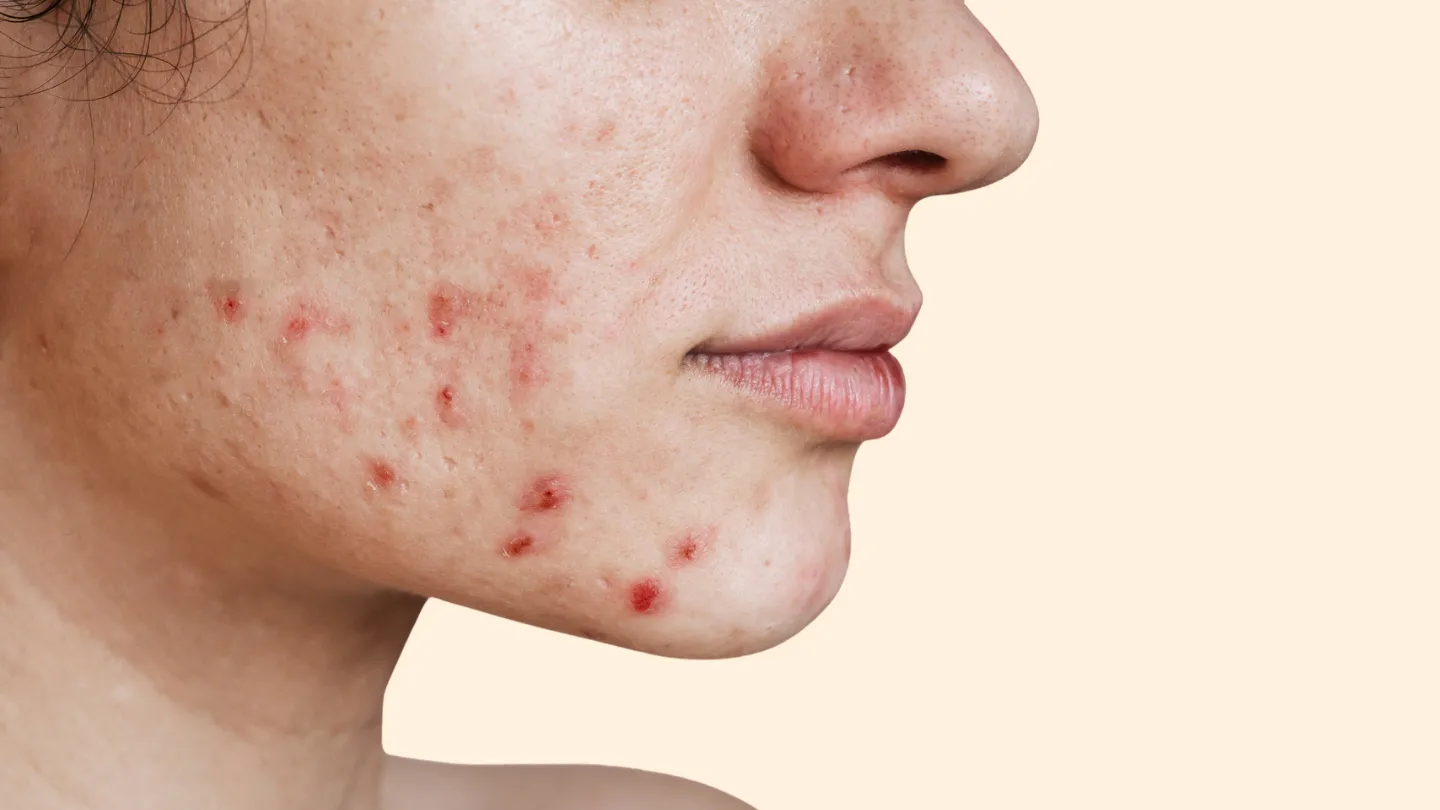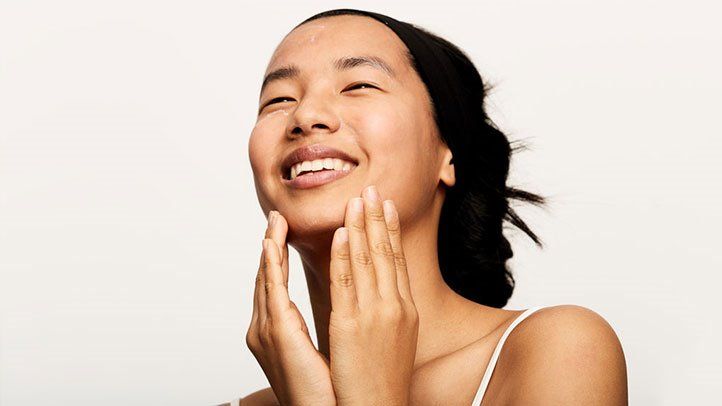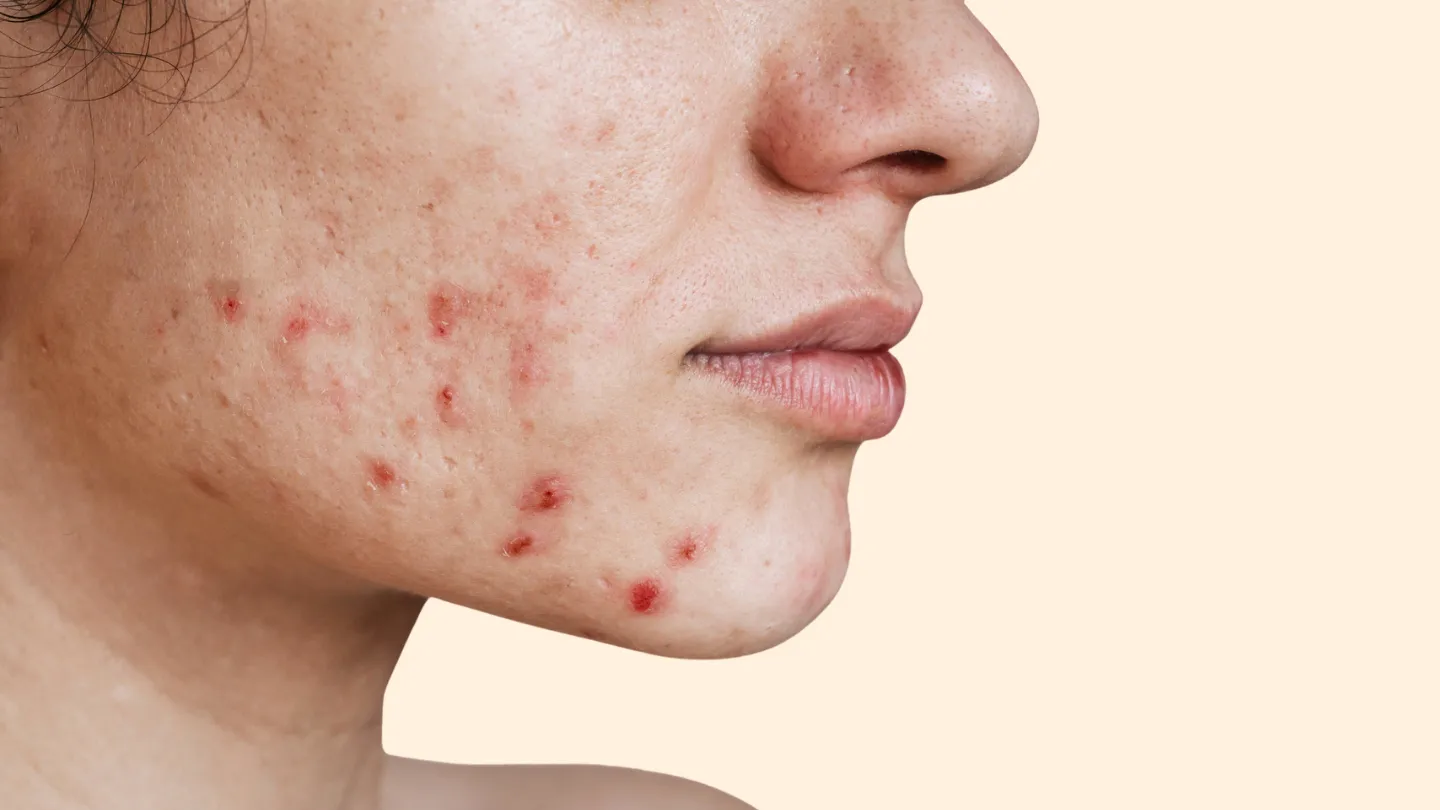Understanding Keratosis Pilaris
Keratosis pilaris (KP) is a common skin condition characterized by small, hard bumps that appear on the skin. The bumps are usually found on the upper arms, thighs, cheeks, and buttocks. KP results from a buildup of keratin, a protein found in skin, hair, and nails. The excess keratin blocks the opening of hair follicles in the skin, forming rough, bumpy patches.
KP often runs in families and is generally harmless, although the bumps can be unsightly and cause self-consciousness. The condition usually appears in childhood or during the teenage years and can persist into adulthood. There is no cure for KP, but treatments are available to improve the appearance of the bumps.
What Causes Keratosis Pilaris?
Doctors aren't entirely sure what causes KP, but it seems to be related to genes. KP occurs when too much keratin is produced in hair follicles. People with KP may have mutations in the genes involved in keratin production, causing excess keratin to build up.
Other factors like dry skin and inflammation can also contribute to KP by irritating hair follicles. KP bumps often worsen during the drier winter months when skin lacks moisture. Hormones may play a role as well since KP often surfaces around puberty.
Common Locations for KP Bumps
Some of the most common places for KP bumps to appear include:
- Upper arms
- Thighs
- Buttocks
- Cheeks
- Legs
- Back
- Torso
The bumps appear as small, goosebump-like dots that may be skin colored, pink, red, or brownish. They are usually rough and dry to the touch. KP bumps rarely appear on soft skin surfaces like the underarms or backs of the knees.
Why You Should Not Pop KP Bumps
It can be tempting to pop keratosis pilaris bumps that look unsightly, especially on areas like the arms and legs. However, dermatologists strongly advise against popping KP for several reasons.
1. Popping can cause infection
One of the biggest risks with popping KP is infection. Your fingers harbor bacteria that can be introduced into the skin when you pop a bump. This can lead to inflammation, swelling, and potential bacterial or fungal infection of the hair follicle.
Infected KP bumps require antibiotic treatment to clear up. Popping also increases the risk of scarring if the infection causes permanent damage to the follicle. So it's better to keep your hands off KP bumps.
2. Scarring is possible
Even if popping doesn't become infected, it can still lead to scarring. KP bumps contain keratin trapped within the follicle. Aggressively popping them can damage the follicle and surrounding skin tissue. This increases the likelihood of pitted or raised scarring.
Scarring defeats the purpose of trying to improve the appearance of KP. The discoloration and indentations caused by scarring are typically permanent. It's smarter to use other treatments to reduce redness and roughness from KP.
3. Bumps will still recur
Popping provides only temporary relief from KP bumps. The underlying condition causing keratin buildup is still present. Within days or weeks, new bumps will likely form and the problem starts all over again.
Consistently popping KP over time can lead to more inflammation and even worsen the severity of outbreaks. Dermatologists liken KP to a chronic condition like acne. Popping individual pimples doesn't address the root causes.
4. Bleeding can occur
KP bumps contain blood vessels just under the surface of skin. Popping the bumps can lead to bleeding if these small capillaries are damaged. This introduces more infection risk and inflammation.
Bleeding from KP spots is usually minor. But consistently picking and popping bumps over time raises the chances of excessive bleeding needing medical treatment.
5. Popping is painful
The skin covering KP bumps is thicker than normal due to the buildup of keratin below. Trying to pop through this tougher skinlayer is often uncomfortable or downright painful.
Using fingernails or tools further increases pain and damage to the skin. The discomfort deters most people from persistently picking KP bumps. But any level of picking should be avoided.
How to Treat Keratosis Pilaris
While popping KP is not recommended, treating the condition is still important for improving appearance and reducing roughness. Some of the best methods include:
1. Exfoliating
Gently exfoliating is one of the best ways to treat KP bumps. Using a loofah, dry brush, sugar or salt scrub, or chemical exfoliants can help remove excess keratin. Improving cell turnover softens skin and breaks up trapped keratin.
Look for exfoliants with ingredients like glycolic, lactic, or salicylic acid. Urea is another excellent keratolytic for KP. But take care not to scrub too hard to avoid irritating skin.
2. Moisturizing
Hydrating the skin daily helps improve the functioning of the skin barrier. KP worsens when skin becomes excessively dry. A good moisturizer also softens skin, allowing for easier exfoliation.
Choose lotions and creams containing urea, glycerin, ceramides, hyaluronic acid, or oils like coconut or jojoba. Avoid heavily fragranced products which may cause sensitivity. Apply moisturizer within a few minutes after bathing.
3. Medicated Creams
Creams containing medications like urea, lactic acid, salicylic acid, or retinoids can enhance exfoliation. Your dermatologist may prescribe stronger retinoids like tretinoin to alleviate rough, stubborn KP.
Using medicated creams alongside moisturizing and exfoliating improves results. Make sure to use sun protection too since the skin will be more sensitive to sunlight.
4. Laser or Light Therapy
For severe, treatment resistant KP, laser or light therapy may be an option. These devices help destroy overgrown cells and resurface the skin. Several sessions are usually needed for optimal improvement.
Ablative and non-ablative lasers, as well as intense pulsed light are potential treatments. But these options can be costly compared to home care methods when treating widespread KP.
How Long Until KP Improves?
With consistent treatment, you can expect KP bumps to start improving within 4 to 6 weeks. But full clearance of bumps takes persistence and daily care. It may take 3 months or longer to see significant smoothing of texture and reduction in redness.
Have realistic expectations when treating KP. This is a lifelong condition for most people. Flareups can occur due to changes in climate, skin dryness, and other factors. Sticking to a regular treatment routine offers the best results.
When to See a Dermatologist
Most cases of KP can be managed effectively at home with over-the-counter products. But if you've tried the standard treatments without success for several months, seeing a dermatologist may help.
Signs it may be time to visit a dermatologist include:
- No improvement after 6 months of treatment
- KP is widespread and severely impacting quality of life
- KP is causing significant scarring or discoloration
- You have additional skin concerns like acne or rosacea
A dermatologist can prescribe clinical-strength exfoliants, topical or oral medications, or recommend advanced treatments like phototherapy. Having a doctor monitor your progress helps optimize results.
Living with Keratosis Pilaris
While KP can be frustrating to deal with, rest assured there are ways to successfully manage it. Avoid harmful habits like excessive popping. Instead, be diligent with supportive self-care methods.
With a gentle, customized skin care routine, most people see an improvement in the look and feel of KP bumps overtime. Arm yourself with patience and information to reduce KP bumps the safe, effective way.
FAQs
What causes keratosis pilaris?
Keratosis pilaris is caused by a buildup of keratin, a protein in the skin. This causes small, hard bumps to appear where hair follicles become clogged with excess keratin. Genetics play a role, as KP often runs in families.
Where does KP usually appear?
Common locations for KP bumps include the upper arms, thighs, buttocks, cheeks, legs, back, and torso. KP rarely shows up on soft, smooth parts of skin like the underarms.
Is there a cure for keratosis pilaris?
There is no cure for KP, as it stems from genetic factors affecting keratin production. But consistent treatment can help improve the appearance and texture of KP bumps over time.
How can I safely treat KP at home?
Recommended at-home treatments include gentle exfoliation, daily moisturizing, using medicated creams with ingredients like urea or salicylic acid, and avoiding skin irritation.
When should I see a dermatologist for my KP?
See a dermatologist if OTC treatments aren’t working after 6 months, KP is widespread and impacting quality of life, bumps are severely scarring, or you have additional skin issues.
Disclaimer: This article is for informational purposes only and does not constitute medical advice. Always consult with a healthcare professional before starting any new treatment regimen.
Related Coverage
Hormonal acne, occlusion, cosmetics, saliva contact, and friction can cause chin and mouth breakouts in adult women. Treatments like antibiotics and retinoids help....
Does fasting help with acne? Discover the science behind the relationship between fasting and acne, potential benefits, drawbacks, and best practices for incorporating fasting into your skin care routine....
Learn what causes lip zits and how to get rid of them fast using warm compresses, OTC creams, antibiotics, lifestyle changes and dermatologist treatments....
Discover the top non-comedogenic and oil-free moisturizers for hydrating acne-prone skin without clogging pores. Includes reviews of moisturizers with hyaluronic acid....
Discover the intricate relationship between sebum, air exposure, and acne formation. Explore the role of sebum plugs, Propionibacterium acnes, and various contributing factors in this comprehensive guide to understanding and managing acne....
Find out if sugary sodas can contribute to acne breakouts in adults. Get research overview and dermatologist tips for treating acne internally and externally....
Discover the growing movement celebrating the natural beauty of the female form, including the curvaceous contours of a woman's backside. Explore the art, confidence, and empowerment behind these sensual images....
Discover the top-rated oil-free moisturizers for acne-prone skin. Learn tips for choosing non-comedogenic hydrators and applying them properly....
Bumps on the buttocks may be caused by folliculitis, carbuncles, keratosis pilaris, or contact dermatitis. Treat with OTC meds, prescriptions, procedures. Prevent with hygiene....
Skin popping illegal drugs leads to distinct track mark scarring plus infections and overdose risks. But professional treatment can restore hope and skin health....






